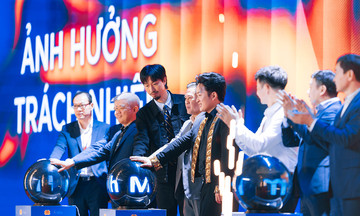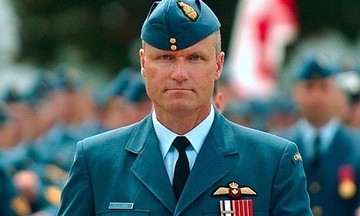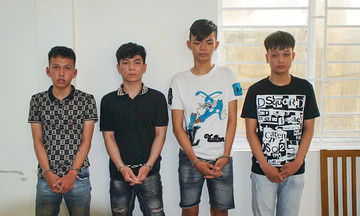On the afternoon of 25/7, Lam's family's story was shared at a conference summarizing a year of DNA collection from relatives of unidentified fallen soldiers, organized by the Ministry of Public Security.
After a year of implementation, the C06 unit of the Ministry of Public Security, along with other units, has identified 16 fallen heroes, all laid to rest in Duc Co Cemetery, Gia Lai Province. That afternoon, representatives from 7 localities gathered to receive the "DNA identification results of fallen soldiers' remains" from the Department of Merit, Ministry of Home Affairs.
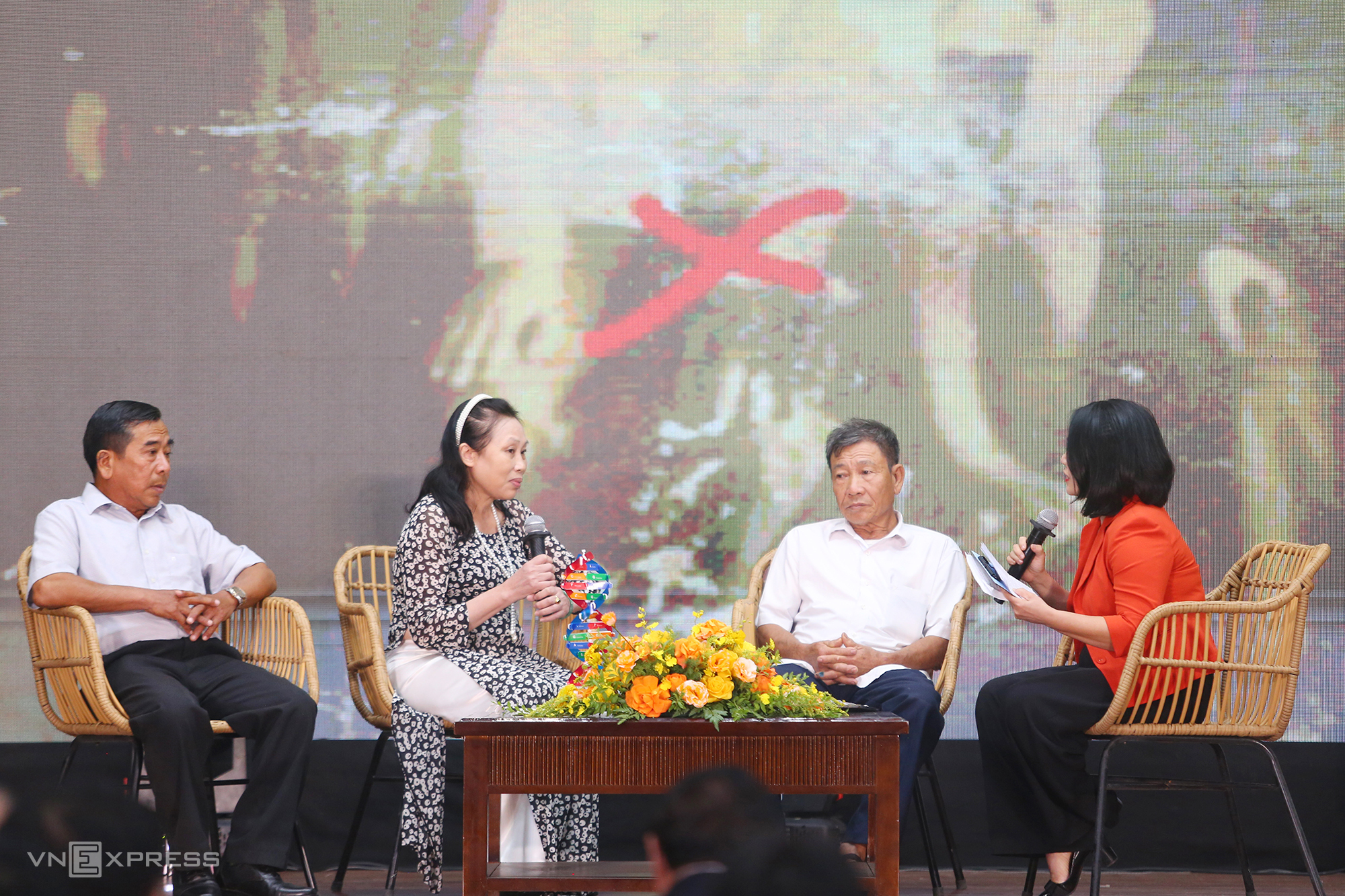 |
Family representatives of the identified fallen soldiers at the meeting. Photo: Pham Du |
Two sets of remains from Thanh Hoa Province were identified, originating from Nga An and Dong Thanh communes. At the conference, Trinh Van Tuan, the younger brother of Trinh Quang Lam (born in 1952, residing in Nga An commune), saw his brother's wartime memorabilia for the first time.
Tuan recounted how his brother volunteered for military service in 1968, even though another brother had already died in the war and Lam had not received a draft notice. After training, Lam was deployed to the southern battlefield in the early 1970s.
On 20/1/1971, the family received Lam's death notice but held onto hope. After the country's reunification, when Lam still didn't return, the family "faced the truth" and began their search for his remains.
Years later, the family found a grave bearing the name Trinh Quang Lam in Dong Nai Province's military cemetery, with matching personal information. For 25 years, Tuan's family traveled to Dong Nai to pay their respects.
Months ago, Tuan's family provided DNA samples for comparison with unidentified remains at Duc Co Cemetery. The results confirmed a match.
"Our entire family was mistaken for years until the DNA results came back. I thank the units involved for helping bring my brother's remains back to our home in Thanh Hoa. I also hope the remains of the soldier named Lam in Dong Nai will soon be reunited with his family," Tuan shared.
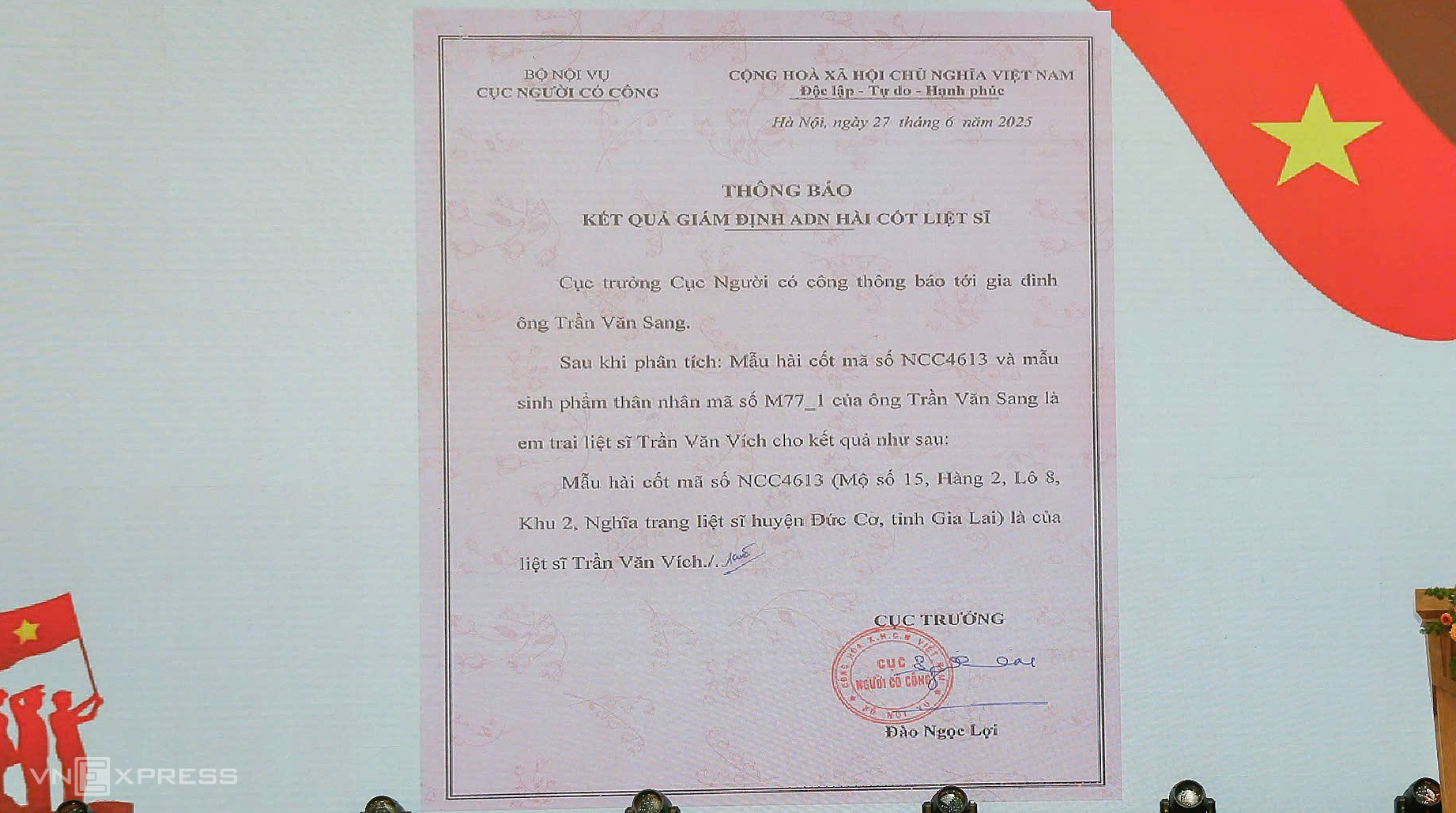 |
DNA identification results of the fallen soldiers' remains. Photo: Pham Du |
At the same meeting, the younger sister of Nguyen Quoc Hoi (Quang Binh Province) shared that her brother, a teacher, enlisted in January 1971. After serving in the south, he returned home for a brief visit.
"Before leaving to rejoin his unit, he reminded us to keep his bicycle safe so he could use it for teaching when he returned. My mother went to the garden to pick bananas for him to eat during the farewell gathering. That was the last time our family was together," Hoi's sister recalled, adding that they received his death notice in May 1972.
After the reunification on 30/4/1975, the family searched for Hoi's remains in the southern provinces, visiting numerous cemeteries and placing newspaper ads, but to no avail.
"Our family made multiple trips to Truong Son Cemetery, Ba Ria - Vung Tau Cemetery, and twice to Duc Co Cemetery—where many graves remain unidentified. But fate hadn't brought us together yet. It wasn't until the DNA identification project was launched that our family was overjoyed to learn his remains were indeed at Duc Co Cemetery," Hoi's nephew emotionally stated.
Sharing similar sentiments, Nguyen Van Hai, from Duyen Ha commune, Hung Yen Province, said his brother, Nguyen Van Yen, died on 31/8/1971 in the south. The family "tried everything" to find him, but their efforts were unsuccessful. After 54 years of waiting, thanks to the DNA identification by the police, the family finally located his grave to "bring him home for proper burial and remembrance."
Prime Minister: 'No fallen soldier will be forgotten'
Addressing the conference, Prime Minister Pham Minh Chinh described the program as deeply humane, demonstrating responsibility not only to those who sacrificed for the nation and its people, but also to their families. "Nothing we do can ever truly repay the sacrifice of these fallen heroes."
Before the representatives of the 16 families, the Prime Minister recounted a recent encounter with a family from Nghe An who traveled all the way to An Giang to retrieve their loved one's remains. "They left as young men, full of life, carrying with them their youth, beliefs, and hopes for the future. But now, their families can only hope to find what little remains of them," the Prime Minister stated.
He emphasized the urgency of DNA collection for identifying fallen soldiers, noting that "no one lives forever to wait for the results." The goal is to bring as many fallen soldiers back to their names, hometowns, and families as possible. "No fallen soldier will be forgotten. No family of a fallen soldier will be left waiting in vain," the Prime Minister directed.
 |
Prime Minister Pham Minh Chinh and Deputy Minister of Public Security Nguyen Van Long present certificates and gifts to the families of the fallen soldiers. Photo: Pham Du |
Currently, the database of fallen soldiers and their relatives remains incomplete, fragmented, and overlapping. Tracing relatives is challenging due to their advanced age or passing, and there are significant gaps in the collection of records and data. The payment process for DNA testing is also cumbersome, and the capacity of some agencies remains limited.
Therefore, the Prime Minister urged the Ministry of Finance and relevant agencies to adhere to regulations but avoid rigidity, prioritizing cost-effectiveness and preventing personal gain. The Ministry of Finance should provide specific guidelines to expedite the DNA testing payment process, leading to more identifications.
Nationwide, there are over 330,000 records of unidentified fallen soldiers. DNA identification requires at least two samples from relatives, meaning over 660,000 DNA samples are needed. After a year, over 284,000 samples have been collected. As of 20/7, the C06 unit has analyzed 11,138 DNA samples from relatives.
At Duc Co Military Cemetery in Gia Lai Province, 128 sets of remains are interred. After reviewing information and collecting DNA samples from relatives, the C06 unit has identified 16 individuals.




